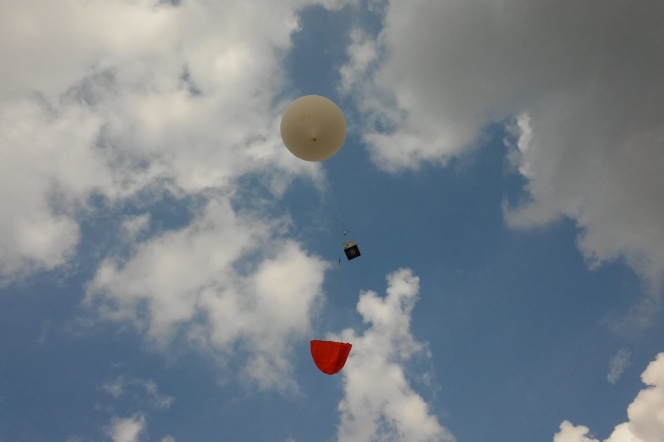Date added: 2021-09-03
Students are sending a balloon into ... the stratosphere to study "mysterious" bacteria.

The SimLE Research Club and the Gdańsk Tech Biotechnology Students Club jointly carry out the Stardust project, i.e. the missions of stratospheric balloons. The aim of this latest project is to study microorganisms in the stratosphere that have not been described yet. These microorganisms can be used in industry in the future, e.g. in pharmaceuticals.
– The samples we collected during the initial biological mission were tested and classified. It turned out that as much as 26% of the genetic material we collected came from previously unknown bacteria, emphasize members of the SimLE research club.
The REXUS/BEXUS program, in which students participate, has been implemented since 2007. It was inaugurated by the signing of an agreement between the Swedish Space Agency (SNSA) and the German Space Agency (DLR) in cooperation with the European Space Agency. REXUS/BEXUS focuses on research carried out by students using high altitude balloons and sounding rockets. Teams from several dozen universities from all over Europe compete in the competition and only a few of the best ones are qualified. The Stardust project team is one of thirteen such teams in this edition, and the only one from our country.
How do students conquer space?
Stardust is an interdisciplinary team composed of representatives of the following faculties: Mechanical Engineering and Ship Technology, Electrical and Control Engineering, Electronics, Telecommunications and Informatics, and Chemical Faculty. Cooperation in various fields of engineering is essential in this case. For the purposes of the REXUS/BEXUS mission, students prepared an experimental gondola and the so-called Groundbox station. Both devices will collect air samples onto filters installed inside. The entire system is controlled by special pumps. The system is also equipped with sensors of weather conditions. The Groundbox gondola will be a research test - biological material collected from the earth's surface will be deposited on the filters. The main gondola will rise to an altitude of 30 km and will take a 2-5-hour flight in the stratosphere, and this is when the collection of bacteria, key to the success of the Stardust project, will take place. After the flight, the experimental setup will land - using a parachute - on the ground. The filters will be isolated from the system, safely packed, and then transported to the laboratory at the Faculty of Chemistry of our University. The stratospheric microbiome will be compared with that of the air collected from the balloon's launch site.
"Mysterious" bacteria
Preliminary studies conducted by students in 2018 also suggest a numerical predominance of enterococci over other bacteria in the stratosphere, which had not been confirmed by previous literature reports. The REXUS/BEXUS mission can confirm these results. - We believe that this requires deeper verification by performing well-planned experiments that can be carried out thanks to the balloon flights. Therefore, we count on success in the form of a correctly conducted mission, as well as groundbreaking research results - both from the technical and research point of view. We are planning a scientific publication, we hope that in the spring of 2022 we will be able to publish the results - add the students. The experiment provides information about the possibilities of the spread of bacteria around the world, which is important from the point of view of epidemiological threats and environmental biodiversity. It can also provide scientists with knowledge about the mechanisms of survival of microorganisms under stratospheric conditions.
Cosmos from the inside out
Working in the SimLE research club helped the project members to understand all the ins and outs of the implementation of a space project. During two years of work, students created over 200-page documentation and held several meetings with experts from the European Space Agency. They had the opportunity to visit the European Space Research and Technology Center in the Netherlands and the ESRANGE Space Center in Sweden, where they met experienced engineers from the space industry, as well as peers from other European universities who are preparing their own stratospheric experiments. In addition to valuable experience, Stardust also helped the members of the Club to obtain the desired scientific titles - several engineering and master's theses have already been created basing on the project.

